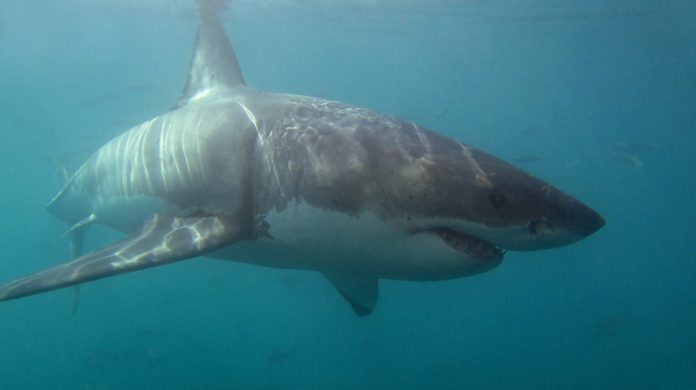A new analysis of ancient sea species reveals that the megalodon, the largest marine predator which existed 3.6 million years ago, possessed warm-blooded qualities
This has provided fresh insights into its extinction and modern environmental changes.
The recent study conducted by environmental scientists from UCLA, UC Merced, and William Paterson University sheds light on the fascinating warm-blooded characteristics of the megalodon shark.
Unraveling the megalodon’s warm-blooded nature
This analysis of ancient sea species not only provides a deeper understanding of the extinct creature but also offers potential explanations for its eventual extinction.
By examining isotopes found in the tooth enamel of the megalodon, scientists have determined that this prehistoric giant could maintain a body temperature approximately 13 degrees Fahrenheit (7 degrees Celsius) warmer than the surrounding water.
This is a groundbreaking finding which is expanding our understanding of sea animals.
A unique warm-blooded predator
Compared to other sharks that coexisted with the megalodon, this temperature difference is significantly greater, categorising the megalodon as a warm-blooded creature.
Published in Proceedings of the National Academy of Sciences, the research paper suggests that the energy expended by the megalodon to regulate its body temperature might have contributed to its extinction.
Additionally, these findings have implications for understanding the impact of ongoing climate change on large marine predators in modern ocean ecosystems.
Fascinating insights into mesothermy of megalodon shark
Megalodons, which could grow up to 50 feet in length, belong to a group of sharks known as mackerel sharks.
Today, their descendants include the great white and thresher sharks. Unlike most fish, which are cold-blooded, mackerel sharks possess the unique ability to maintain body temperatures higher than the surrounding water.
These warm-blooded qualities are referred to as mesothermy and regional endothermy, where the temperature of certain body parts remains warmer than the water around them.

Tracing the clues in fossil teeth
The challenge of determining if and to what extent the megalodon was endothermic has been met by examining its most abundant fossil remains: teeth.
Apatite, a mineral present in teeth, contains carbon and oxygen isotopes that reflect environmental factors and can provide valuable insights into an animal’s habitat, diet, and body temperature.
Through the isotopic composition analysis of fossil teeth, scientists can estimate the temperature at which the teeth formed, providing an approximation of the animal’s body temperature during its lifetime.
The study compared the isotope values of megalodon teeth with those of other sharks from the same era.
By doing so, researchers could assess the degree to which the megalodon could regulate its body temperature.
Teeth samples were collected from five different locations worldwide and analyzed using mass spectrometers at UCLA and UC Merced.
The results consistently indicated that megalodons had an impressive ability to regulate their body temperature, which conferred evolutionary advantages such as increased speed, tolerance to colder water, and global distribution.
Both triumph and tragedy for the ancient sea creature
However, the same advantageous warm-blooded nature that allowed the megalodon to thrive may have contributed to its eventual downfall.
Living during the Pliocene Epoch, a period characterized by global cooling, the megalodon faced significant challenges due to changes in sea levels and ecosystems.
Maintaining an energy level necessary to sustain its elevated body temperature became difficult, especially when faced with new competitors such as the great white shark. These changes likely played a role in the megalodon’s extinction.
Exploring endothermy across species
Lead researcher Robert Eagle, an assistant professor at UCLA, expressed the team’s intention to expand their approach to studying other species.
Having established the megalodon’s endothermic nature, they are now planning to use similar methods to studying other species.











